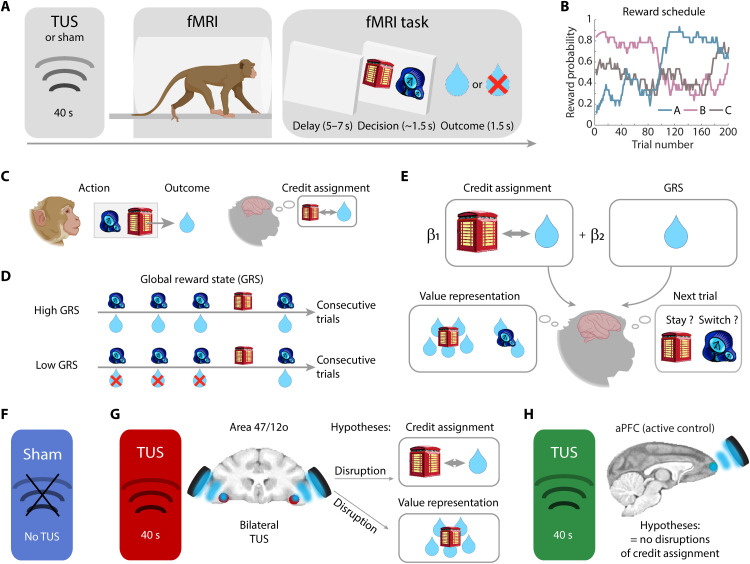Fig. 1. Experimental design.
(A) Four macaques learned to choose one of the two options represented by visual stimuli presented on a computer monitor by pressing an adjacent touch sensor while in the MRI scanner. The two options presented on each trial were drawn from a larger set of three options. Macaques learned about new stimulus sets in each daily testing session. (B) Each option, if chosen, had a probabilistic association with juice reward delivery that drifted over time during the course of the experiment. The reward histories for the three options were uncorrelated with one another (<22% mean shared variance), making it possible to identify neural activity that was correlated with the value of each one of the three options. (C) We examined the neural circuits encoding different features of rewards. This includes the specific relationships between choices and outcomes essential for credit assignment and (D) the general value of the environment regardless of the specific choice taken, a feature of reward that we refer to as the GRS. (E) To test our hypotheses, we also investigated the choice value representations that result from credit assignment and the decision to stay or switch on future trials. (F) We used three experimental TUS settings: Sham, where no stimulation was applied; (G) TUS targeting a region in area 47/12o, hypothesized to disrupt both credit assignment and value representations that depend on credit assignment; and an active control condition (H) in which TUS was applied to anterior prefrontal cortex (aPFC), hypothesized to cause no disruption in credit assignment and value representation. Blue, red, and green color codes indicate results relating to sham, 47/12o, and aPFC conditions, respectively, in the subsequent figures.

